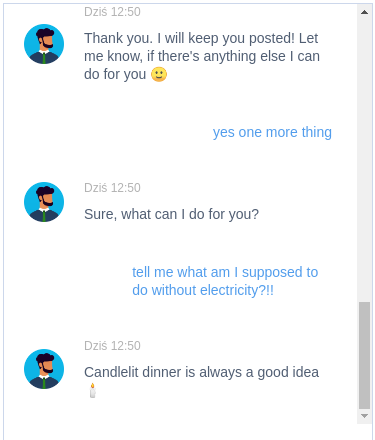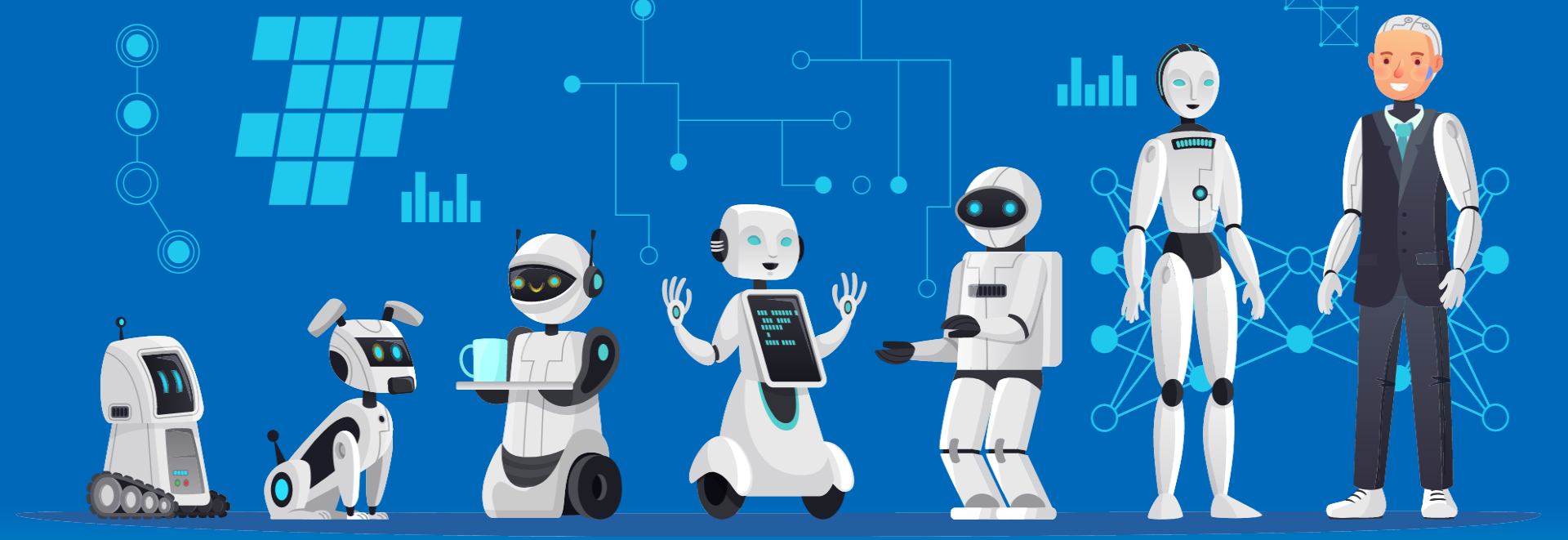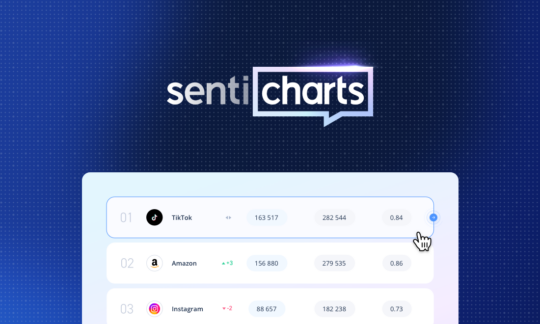How to develop a bot persona?
It’s common knowledge that providing an impeccable user experience is one of the most important factors that determine product success. But how do you convey good UX in a small piece of text? What does the UX of a chatbot actually mean? What makes conversational user interfaces enjoyable and usable?
The answer, quite simply, is a good bot persona
Chances are that this is the first time you hear of this notion and you’re probably wondering what it actually means… The bot persona is the heart of your chatbot; it is everything that makes it more than a good piece of code. At the same time it shouldn’t try to trick your users into thinking that they are talking to a real person instead of a machine. The bot’s personality – the way it talks or even looks – is simply a core component of user experience of any conversational interface.
Why should I care?
If you are in any way, shape, or form connected to the chatbot (or voicebot) creation process and you’re feeling like you couldn’t care less about any of this nonsense, you are likely going to change your mind after reading this article.
Why it is so important to give your bot a personality? Anthropomorphization – that’s a very fancy name for a cognitive process that is deeply ingrained in all human minds. It makes us look for – and recognize! – human characteristics in literally anything and everything. The way it works, in this case, is pretty simple – if you’re not going to give your bot a personality, your users are going to do it anyway – and you certainly don’t want that. Trust me.
These days, thanks to the recent advancements in the world of digital technology, the customer journey is far from being linear. Customers come and go and you want to be there for them 24/7. At some point, they are bound to encounter a bot as a part of your service. That’s why your bot persona should be consistent with the general branding of your company. In other words, your virtual assistant should reflect the way you want your users to perceive your service or product.
Whether written of spoken, conversations are the most natural way for people to communicate. Whether they are aware of it or not, your customers are going to interact with your bot in a more direct and personal way than you may expect. Think of it more as chatting with a friendly neighbour than writing an official email. This aspect of virtual assistants offers a great chance for brands to foster stronger relationships with their customers. On the other hand, poor experiences may colour their perception of your company and your product.
How to start?
Creating a bot persona might seem like a dream come true for every sci-fi lover, but even they should follow a design process.
Once we define which problems the bot is going to tackle (and we figure out all of our use cases), it’s time to meet the users.. This is a crucial part of our bot’s personality development. It’s not only important to have a full customer profile; above all, you need to understand their values and style of conversation and reflect those in the way the bot talks. A bot that uses slang and trendy acronyms might not be the perfect fit for a legal virtual assistant. It may, however, be a good choice for a bot promoting a fancy ski resort loved by millennials.
The main elements of a bot persona

Name
It’s rather obvious that a bot should have a name. Unfortunately, actually naming it is not always easy.
First of all, you have to decide whether a bot should represent the company as a whole, being its actual voice, or whether it should present itself as one of your employees. If your brand name is strong and widely recognisable it might be a good idea to go with it. However, your users might get the impression that the bot offers the same service as your brand in general.
You should also bear in mind that a good name should be memorable, descriptive and, in some cases, even internationally understandable.
Gender
The bot’s name can often disguise its gender, which implies another important decision to make. The tendency to create female virtual assistants is so prevalent that UNESCO recently released a 145-page paper entitled “I’d blush if I could: closing gender divides in digital skills through education”. You can sidestep the entire issue by intentionally designing a gender-neutral bot.
Personality and language
When designing the bot’s personality and language you should take a few things into account:
think about the environment your bot is going to work in. Will it be formal, or laid back and relaxed? What are the social attributes that are considered to be important in such an environment?
The next thing is the job your bot is going to perform. Is it a serious task, such as scheduling a doctor’s appointment or something more enjoyable, such as ordering a pizza? Different industries and tasks imply different personalities.
Get to know your users. Your bot’s personality and language should be in line with the type of your audience. It is very important when it comes to building trust.
The core values of your company are of the utmost importance at this point. They should be reflected in the way your bot talks and deals with your customers. If you consider yourself an innovative and cool company, let your bot act like it.
Remember not to go overboard – a task-oriented bot shouldn’t be overshadowed by its beaming personality.
My last piece of advice is that if you plan to go international, make sure that your bot is going to be socially acceptable and relevant in all cultures and on all continents.
Here’s some common characteristics and descriptors which may come in handy when designing your bot’s personality:: inspiring trust, solution-oriented, supportive, simple, kind, precise, authoritative, communicative, straight forward, fun, polite, easy-going, friendly, direct, non-intrusive, talkative.
The visual aspect

At first glance, it may seem that bots don’t require a whole lot of visual branding. While that may be true for voicebots, chatbots allow many more possibilities. At the very least, your bot should have a logo. However, to make the interaction more engaging, you should make smart use of emojis, stickers, GIFs, et cetera – you can even incorporate special images dedicated for your bot that can be functional and support different use-cases. Maintain strong brand association through the use of consistent visuals.
The voice
Choosing an appropriate voice is a crucial aspect of creating a voice user interface (VUI). You can use text to speech solutions or recorded prompts. Although Text-to-Speech technology is miles ahead from where it was even 5 years ago, it still isn’t perfect, especially when it comes to intonation or pronouncing specific words. However, using it is much less resource consuming than recording prompts with a voice talent.
An alternative way is to combine these two options in a hybrid solution of human voice and TTS.
Who actually does these things?
If you’re wondering who exactly should take part in the process of creating a bot persona, unfortunately, there is no simple answer – it heavily depends on the type of project you’re running.
If you represent a company looking for a new bot, the best way to go is to choose a contractor who will provide you with an end-to-end solution (such as SentiOne).
When it comes to your bot persona, having only one provider is time-and-cost-efficient as there is no time wasted on the communication between all the stakeholders. However, if you want to outsource different parts of the project to different contractors, you need to lay down firm rules and make sure everyone understands their role and purview. Bot designers should be responsible for designing the flow of the bot and defining the main behavioursintents according to your requirements; the agency should design an appropriate persona that is in line with your brand as well as take care of copywriting for the scenarios provided by the bot designer.
If you represent an agency or a company delivering complete chatbot solutions, my piece of advice is to schedule a workshop with your client. Creating a bot persona requires a lot of creative thinking. And what better way to spark some creativity than to encourage a multidisciplinary team to brainstorm? This approach comes with added bonuses – team integration and ensured future engagement in the project!
But who exactly should attend such a workshop? Keep in mind what a wise man once said: ‘Innovation takes a village’. People from different fields – not just the traditional deciders – can provide different perspectives. For example, a customer service specialist can provide you with insight no one else in the organisation can offer. They have enormous first-hand experience in dealing with the customers and they know exactly what their struggles are. Since they are extremely helpful when it comes to identifying customers’ pain points, they can protect you from falling into common pitfalls, such as placing a joke in a situation when there’s a risk that the customer might already be annoyed, or not providing enough information and support in an ambiguous situation.
If you are taking part in a proof of concept project and you don’t have a lot of resources, try to utilize the natural energy of your team. Host a quick brainstorming session and hallway testing. You could even use Myers-Briggs personality archetypes to quickly develop an ad hoc bot persona. No matter which approach you choose to develop the character of your virtual assistant, always bear in mind that everyone likes to talk to efficient, helpful, and funny bots – in some cases, it might be as simple as that.
Bot style guide
This process should not only result in an amazing bot, but also a complete style guide for future reference. It should consist of sections such as:
- The bot’s name
- Gender
- Specific job
- Backstory
- Tone of voice
- Personality traits
- Values
- Key terms and Lingo
- Emojis and GIFs
- Avatar
- Colours
Of course, not every element on this list is equally important – everything depends on your specific situation and scenario. For example, specifying a list of emojis is useful only for chatbots. If you’re developing a voicebot instead, you might want to add the name of your Text-to-Speech software of choice.
A good style guide should also contain some copywriting samples for fixed utterances such as Introductions, Greetings or Re-prompts in case of mistakes. It is human nature to focus on the bad rather than the good, so it is crucial to handle the inevitable bot errors gracefully. There should be separate copy for different types of errors. If you would like to learn more about the different categories of bot mistakes, you can check out an excellent section in Google’sConversation Design Guideline.
Remember – microcopy is key. Be bold and don’t be afraid to pepper your copy with subtle jokes and easter eggs. Check out an example below:

Time to develop best practices
There is still a long way ahead of us when it comes to developing the best practices in conversational UI design; as overwhelming it may seem, keep in mind it’s also a great opportunity to experiment and lead by example.



